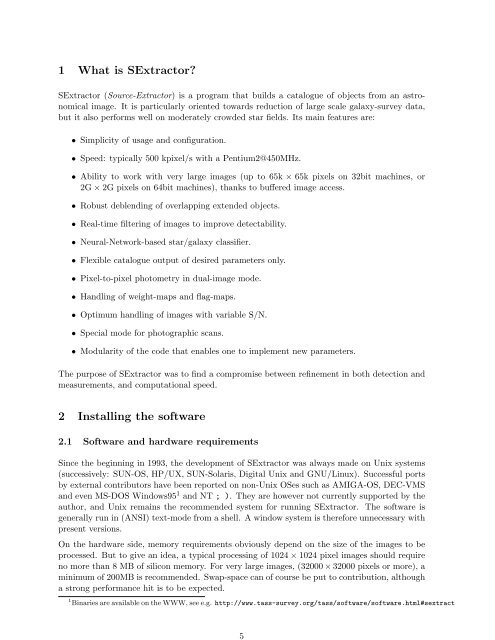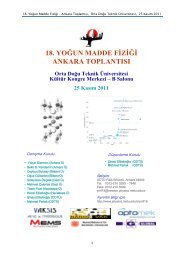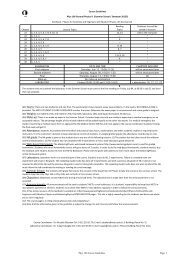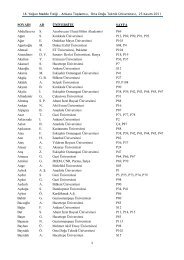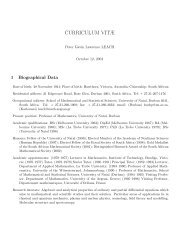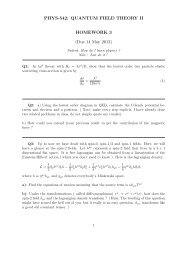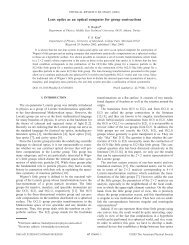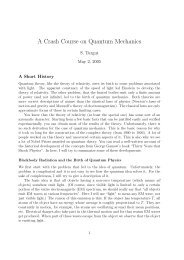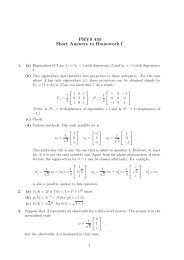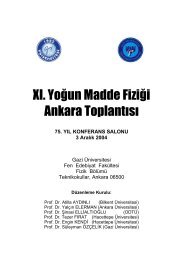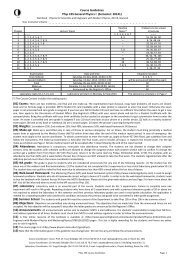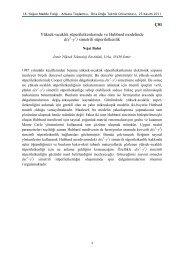SExtractor Draft - METU Astrophysics
SExtractor Draft - METU Astrophysics
SExtractor Draft - METU Astrophysics
- No tags were found...
Create successful ePaper yourself
Turn your PDF publications into a flip-book with our unique Google optimized e-Paper software.
51 What is <strong>SExtractor</strong>?<strong>SExtractor</strong> (Source-Extractor) is a program that builds a catalogue of objects from an astronomicalimage. It is particularly oriented towards reduction of large scale galaxy-survey data,but it also performs well on moderately crowded star fields. Its main features are:• Simplicity of usage and configuration.• Speed: typically 500 kpixel/s with a Pentium2@450MHz.• Ability to work with very large images (up to 65k × 65k pixels on 32bit machines, or2G × 2G pixels on 64bit machines), thanks to buffered image access.• Robust deblending of overlapping extended objects.• Real-time filtering of images to improve detectability.• Neural-Network-based star/galaxy classifier.• Flexible catalogue output of desired parameters only.• Pixel-to-pixel photometry in dual-image mode.• Handling of weight-maps and flag-maps.• Optimum handling of images with variable S/N.• Special mode for photographic scans.• Modularity of the code that enables one to implement new parameters.The purpose of <strong>SExtractor</strong> was to find a compromise between refinement in both detection andmeasurements, and computational speed.2 Installing the software2.1 Software and hardware requirementsSince the beginning in 1993, the development of <strong>SExtractor</strong> was always made on Unix systems(successively: SUN-OS, HP/UX, SUN-Solaris, Digital Unix and GNU/Linux). Successful portsby external contributors have been reported on non-Unix OSes such as AMIGA-OS, DEC-VMSand even MS-DOS Windows95 1 and NT ; ). They are however not currently supported by theauthor, and Unix remains the recommended system for running <strong>SExtractor</strong>. The software isgenerally run in (ANSI) text-mode from a shell. A window system is therefore unnecessary withpresent versions.On the hardware side, memory requirements obviously depend on the size of the images to beprocessed. But to give an idea, a typical processing of 1024 × 1024 pixel images should requireno more than 8 MB of silicon memory. For very large images, (32000 × 32000 pixels or more), aminimum of 200MB is recommended. Swap-space can of course be put to contribution, althougha strong performance hit is to be expected.1 Binaries are available on the WWW, see e.g. http://www.tass-survey.org/tass/software/software.html#sextract


